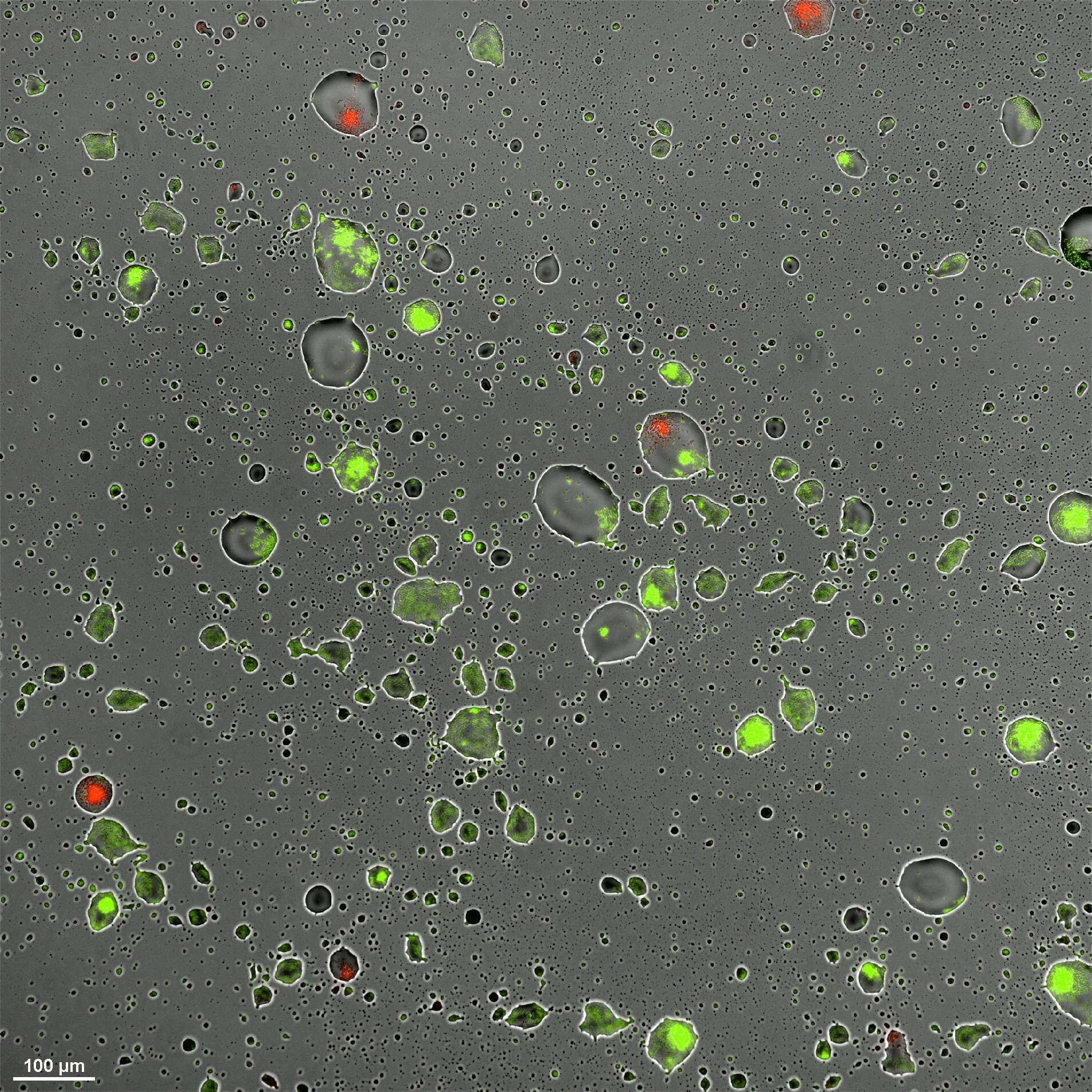While water is essential to life, the largest terrestrial microbial habitats – soil, roots, and leaf surfaces – are not constantly saturated with water and are subjected to frequent drying events. In these habitats bacteria experience fluctuations in water availability that routinely reach desiccation conditions, strongly impacting their survival probability. Bacterial cells in these habitats are observed in both solitary and aggregated forms. These surface-attached aggregates differ in size and shape. In this study, we ask how aggregates` size and morphology influence the extent and duration of their local water availability, and as a consequence, affect their survival probability under desiccation. We hypothesize that large-enough aggregates remain hydrated for longer periods in comparison to solitary cells and as a consequence, increase their survival probability. To this end, we have constructed a dynamic experimental system based on multi-well plates that provides water-saturated conditions where bacteria grow for a defined period of time and then gradually evaporates and becomes dry. Microscopy aided inspection of the surface subsequent to the macroscopic evaporation of the liquid layer revealed three distinct bacterial organization forms: (1) solitary cells; (2) round-shaped dome-like aggregates of different size (10-500 cells); (3) flat aggregates with irregular shape that originate from the water-air interface and have sunk to the surface. Interestingly, while the vacant surface appeared to have completely dried, the surface-attached cells were engulfed with micro-droplets of different sizes and shapes (figure 1). These micro-droplets remained stable for long periods of time (hours to days). The relation between aggregates` characteristics and droplet size was explored by automatic scanning of large surface area (4.25mm x 4.25 mm, thousands of micro-droplets) with adequate resolution for single drop and single-cell analysis. Using advanced image analysis we established a strong correlation between aggregates` features and the surrounding drop size and shape. We found that in comparison to solitary cells, large aggregates retained more water around them and remained hydrated for longer periods. We observed similar results with two distinct bacterial species (Pseudomonas putida and P. fluorescens – a soil and plant-surface model strains) – supporting the view that this phenomenon is not unique to a specific strain. We employed time-lapse microscopy coupled with fluorescence viability assay (Live/Dead) in order to monitor the viability and recovery rate of individual cells and aggregates on the surface. Currently, we are assessing the survival probability within hydrated aggregates over time and with respect to the microscopic drops size and shape. The formation and retention of such micro-droplets around aggregates, may explain how bacterial cells in terrestrial habitats keep their micro-environment hydrated, a feature that is likely key for their survival.


